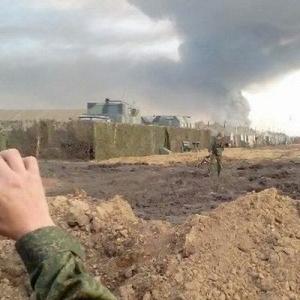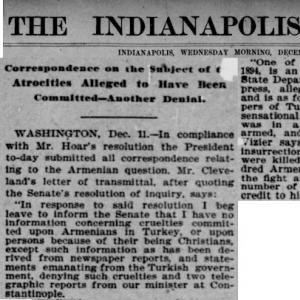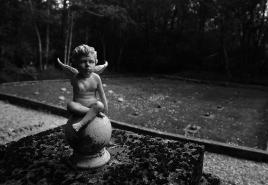The essence of the work is a man in a case. The composition "The symbolic meaning of the image of Belyakov in the story of A
Dec 17 2014
The theme of the "case man" can rightfully be considered a cross-cutting theme in Chekhov. The first step in the disclosure of this topic is made in his early work "Teacher of Literature", but in 1898 three stories appeared, the so-called "Little Trilogy", which can be combined into a cycle based on their common problems. The most grotesque picture of "case" life is given in the first story of the trilogy, where the theme is already stated in the title. Chekhov paints an obviously exaggerated one, which is an artistic generalization of the social phenomenon of that time. So, before us appears Belikov - with a very interesting and even “wonderful” character and habits: “in very good weather” he “went out in galoshes and with an umbrella and certainly in a warm coat with cotton wool. He had an umbrella in a case, and a watch in a case made of gray suede, and when he took out a penknife to sharpen a pencil, he also had a knife in a case; and the face, it seemed, was also in the case, since he hid it all the time in the raised collar ”.
It is no coincidence that the author pays special attention to the portrait. With the help of the characteristics of everyday life, Belikov's costume, he seeks to reveal his soul, inner world, show his true face. So, already from the portrait description, we see that the Greek language has completely fenced itself off from living life, locked itself tightly in its "case" world, which seems to it better than the real one. The case “envelops” the brain, controls the thoughts of the hero, suppressing positive principles.
Thus, he loses everything human, living, turns into a mechanical machine of rules and circulars. But the worst thing is that he imposes these rules and prejudices on the entire surrounding world, in which all goals are set and achieved only by necessity. Oppressing everyone with his caution, Belikov puts pressure on people, makes them afraid: “Our teachers are all thinking people, deeply decent, brought up on Turgenev and Shchedrin, but this little man, who always walked in galoshes and with an umbrella, held the entire gymnasium in his hands for fifteen years! But what about the gymnasium? The whole city!" Developing Chekhov's thought, we understand that the “case” is a generalized image of the whole of Russia with its state regime.
New turn in comprehension of the problem brings the image of Mavra. The darkness and ignorance of people from the people is also a "case" covering all the great aspects of life. But the spirit of the new time is penetrating into the city. Independent, free personalities appear (Kovalenko, his sister), revealing with merciless force the “suffocating atmosphere” of such a life. They find the key to solving the problem, which is contained in the main phrase of the work: “No, it is impossible to live like this anymore!
who can as much as possible (help a lot) this is an internal examination in literary 1. What is the tragedy of love of Zheltkov, the hero of Kuprin's story "The Garnet Bracelet"?
2. Prove that for the hero of Kuprin's story "Garnet Bracelet" love is highest value the world.
3. Show the wealth of the spiritual world of the heroine of Kuprin's story "Olesya".
4. Prove, using examples from Kuprin's works, that his beloved hero is a young man, gentle, intelligent, conscientious, passionately sympathetic to his "little brother" and at the same time weak-willed, tragically submitting to the force of the environment and circumstances.
5. Why is the era of poets of the early 20th century characterized as “ silver Age"Russian poetry? What are its fundamental differences from the "golden age"?
6. What are the three pieces of advice given to the young poet by the lyrical hero of the poem V.Ya. Bryusov Young poet"? Do you agree with his position? What, in your opinion, should a true poet be? Read the poem by heart.
7. Tell us what you know about Bryusov - translator. What are his main translations? From what languages are they implemented?
8. How is interest in ancient Slavic folklore manifested in Balmont's lyrics? What images arise? Analyze the poems Evil Charm and The Firebird.
9. What picture does Balmont paint in the poem "First Love"? Tell us about your perception of this poem.
10. Describe the work of early Mayakovsky. What are its main specific features? Read one poem from this period by heart.
11. "Freedom is the most beautiful thing in life, for the sake of it a person should be ready to sacrifice everything, even life." Confirm Gorky's words with examples from his stories "Makar Chudra" and "Old Woman Izergil".
12. Prove that even an insane but extraordinary step, according to Gorky, will remain in the memory of people. Give examples from Song of the Falcon, Song of the Petrel, The Legend of Marco.
13. What is the meaning of the title of the play "At the Bottom"? Explain its symbolic sound.
14. Who is dedicated to the cycle of poems by the Bloc “Poems about To the lovely lady"? In connection with what is it written? Analyze 3 poems from this collection. Read one by heart.
15. How is the theme of the House revealed in Bulgakov's novel "The White Guard"? What symbolic meaning does the word "house" have for Bulgakov?
16. What philosophical problems are raised in Bulgakov's novel The Master and Margarita?
17. Show the inseparability of the connection between Tsvetaeva's fate and work with Moscow. Analyze the cycle "Poems about Moscow". Read one poem by heart.
18. Describe the image of the lyric heroine of the poem "Requiem".
19. Describe the Cossack way of life, depicted by Sholokhov. Show the features of the speech of the Cossacks. How they help the writer convey the vitality of the environment. How does the writer describe the life of the village?
20. Describe the family lifestyle of the Melekhovs, Korshunovs, Astakhovs. Make a comparative characteristic.
21. As in the novel "Quiet Don" is depicted the First World War?
22. Compare Aksinya and Natalya, explain Gregory's feelings for each of them. What is the meaning of the names of the heroines? Why do both die?
23. What is the meaning of the title of Sholokhov's story "The Fate of a Man"?
24. Give a detailed description military prose and poetry. Analyze 2 pieces.
25. Give a detailed description of urban prose. Analyze 2 pieces.
"The Man in the Case" is a story by A.P. Chekhov, which is part of the "Little Trilogy" cycle. This work, which tells about the life of an ordinary rural teacher, despite the simple style of the narrative and the everyday plot, reveals the deep problems of the human personality.
In this article we will try to conduct brief analysis of Chekhov's story "The Man in a Case". The main character - the teacher of the Greek language Belikov - all his life tried to surround himself with a "cocoon". This was expressed both in clothes (even in summer he wore galoshes and a warm coat, always took an umbrella with him), and in his lifestyle - he lived in solitude, did not understand any instructions, except for prohibitions. Above all for him was public opinion, even in the fact that he connected his life with teaching However, the most amazing thing, despite his low, he kept the whole city in check, under him no one dared to allow themselves "liberties" - simple

human joys. suspicious, Belikov, "a man in a case" (the analysis of the character gives all the grounds for such a comparison), imposed his position on everyone around him, which is his famous phrase: "Oh, no matter what happens." The atmosphere throughout the story is permeated with fear, not even of an obvious threat of punishment, but fear of what is unknown.
Real life is what's in the case. shows that the manic fear of reality killed the protagonist. But Chekhov is not at all sorry for him. He seemed to be weighed down by the presence of the figure of Belikov in his work, along with other residents of the town. Most of all, the author is concerned about the thought: how did people allow such an insignificant person to show others how to live. How do they obey his opinion and then they themselves are burdened by this? Why is the majority of good, intelligent, educated people who "grew up on Shchedrin and Turgenev" afraid of a minority of the cowardly, cowardly, entangled in own complexes copies? After all, this is the case not only in that county town, examples can be found everywhere.
"Man in a Case", which was analyzed, in all its glory shows the vices of society at that time. As if under a microscope, Chekhov examines the relationship of people and empathizes with the heroes. He offers a way to get rid of the imposed fears when he gloatingly describes the scene of the ill-fated Belikov descending from the stairs by Kovalev. Free people should not tolerate the existing order of things, tells us

Anton Pavlovich, otherwise everything will end as sadly as in the story "The Man in the Case". An analysis of the epilogue shows the reader that nothing changed with the death of Belikov, because others took the place of one tyrant, and the residents of the town did not receive the expected reproof, everything continued to go on as usual.
Analysis of the story "Man in a Case" makes it clear that the author has chosen a very successful form of narration - a story in a story. Thanks to this, Chekhov, on behalf of the listener - Ivan Ivanovich - expresses his main idea: living in a stuffy city, doing an unloved business, seeing a lie, smiling and covering it up, changing oneself every day for a piece of bread and a warm bed - isn't this a case? How long can you live like this?
The theme of the “case man” can rightfully be considered a cross-cutting one in Chekhov's work. The writer takes the first step in revealing this topic in his early work "Teacher of Literature", but in 1898 three stories appeared, the so-called "Little Trilogy", which can be combined into a cycle based on their common problems.
The author gives the most grotesque picture of "case" life in the first story of the trilogy, where the theme is already stated in the title. Chekhov paints a clearly exaggerated image, which is an artistic generalization of the social phenomenon of that time. So, before us appears Belikov - a man with a very interesting and even “wonderful” character and habits: “in very good weather” he “went out in galoshes and with an umbrella, and certainly in a warm coat with cotton wool. He had an umbrella in a case, and a watch in a case made of gray suede, and when he took out a penknife to sharpen a pencil, he also had a knife in a case; and the face, it seemed, was also in the case, since he hid it all the time in the raised collar ”. It is no coincidence that the author pays special attention to the portrait of the hero. With the help of the characteristics of everyday life, Belikov's costume, he seeks to reveal his soul, inner world, to show his true face.
So, already from the portrait description we see that the teacher of the Greek language completely fenced himself off from living life, locked himself tightly in his "case" world, which seems to him better than the real one. The case “envelops” the brain, controls the thoughts of the hero, suppressing positive principles. Thus, he loses everything human, living, turns into a mechanical machine of rules and circulars.
But the worst thing is that he imposes these rules and prejudices on the entire surrounding world, in which all goals are set and achieved only by necessity. Oppressing everyone with his caution, Belikov puts pressure on people, makes them afraid: “Our teachers are all thinking people, deeply decent, brought up on Turgenev and Shchedrin, but this little man, who always walked in galoshes and with an umbrella, held the entire gymnasium in his hands for fifteen years! What about the gymnasium? The whole city!" Developing Chekhov's thought, we understand that the "case" is a generalized image of the whole of Russia with its state regime. The image of Mavra introduces a new turn in understanding the problem. The darkness and ignorance of the people of the people is also a "case" covering all the great aspects of life.
But the spirit of the new time is penetrating into the city. Independent, free personalities appear (Kovalenko, his sister), revealing with merciless force the “suffocating atmosphere” of such a life. They find the key to solving the problem, which is contained in the main phrase of the work: "No, it is impossible to live like this anymore!" Indeed, with the arrival of such people, the reign of Belikov ends. He is dying. But one gets the impression that the hero lived precisely for this, finally he reached his ideal: “Now, when he was lying in the coffin, his expression was mild, pleasant, even cheerful, as if he was glad that he was finally put in a case from which he will never leave ”. Yes, Belikov died, but “how many more such people are left in the case, how many more will be!”. During the funeral, the weather was rainy and all the teachers of the gymnasium “were in galoshes and with umbrellas,” as if continuing the traditions of the deceased.
What awaits people leading a "case" lifestyle? Of course, the inevitable loneliness, more terrible than which there is nothing in the world.
But what helped the author create such an original grotesque image that the reader will remember for a long time? Of course, these are various artistic representational and expressive means.
Interested in the everyday life, the hero's costume, the writer gives a full, detailed description of his nature, draws an accurate portrait of his soul. For such a description, Chekhov uses complex syntactic constructions with a large number of homogeneous members expanding the panorama of reality.
The phonetic composition of the work is striking in its diversity. But we note that the sound "o" (assonance) is often encountered, which also conveys the isolation of the hero's life, going in a circle, his remoteness from the world.
Many of Belikov's household items are symbolic. Thus, a case, glasses, galoshes and an umbrella are indispensable attributes of a “case” human existence. It is no coincidence that the story begins and ends with their mention.
The lexical composition of the story also surprises us with its richness. It contains both common and outdated words ("cabman", "sweatshirt", "batman", etc.), which convey the situation of the era.
I would like to note that in the most important, key phrase of the work there is an inversion: "It is impossible to live like this anymore." She kind of attracts the reader's attention to these words, makes them think about their deep meaning.
Chekhov's language is distinguished by its special liveliness, emotionality and simplicity at the same time, which makes his stories accessible and understandable.
The subtleties of the author's skill amaze us already at the first reading of the story, the true intention of his works is revealed to us.
It seems to me that the problem that Chekhov touches upon in the story "The Man in the Case" will always remain relevant. The writer warns about the danger of philistine, everyday vulgarity. Unbeknownst to himself, everyone can fall into the "box" of their own prejudices, ceasing to think and reflect, seek and doubt. And this is really scary, as it leads to spiritual devastation and personality degradation.
Chekhov's story "The Man in a Case" is included in the collection of his works "Little Trilogy". Summary the story is as follows: a person has been hiding from life all his life, and only having died, he found his worthy place, a "case" in which nothing can disturb him. We offer you to get acquainted with the literary analysis of the work "Man in a Case" according to plan. This material can be used to prepare for a literature lesson in grade 10.
Brief analysis
Year of writing- 1898
History of creation- The story was the end of the trilogy. While the author was working on this work, he was diagnosed with tuberculosis, which led to the fading of creativity.
Theme– The main theme the story is a person's avoidance of the truth of life, his isolation in his own shell. As a fact, the theme of loneliness and apathy towards life comes from here. There is also a theme of love.
Composition- The story is written in an understandable language, it is divided into small fragments in which the main idea is clearly expressed.
genre- The story, which is one of the constituent trilogy.
Direction- Satire.
History of creation
In the year of writing the story, 1898, Anton Pavlovich was already seriously ill with tuberculosis, and was striving to complete work on the "little trilogy", so the story of creation was hurried, the writer wrote less and less. When creating his hero, the author did not have a specific person in mind, the image was collective, including the characteristics of many prototypes that have some similarities with Belikov. In the same year, the story was published in the magazine.
Theme
To make an analysis of this work in The Man in the Case, it is necessary to identify issues story. One of the main problems described by the author is sociopathy. A person completely isolates himself from the surrounding society, trying to hide from possible attacks of life, various unforeseen situations that can damage the measured course of his life.
One of main themes, is the isolation of a person. Such a person closed from society is shown the main character story. He hides from people not only his essence, but also all his things, each of which has its own cover and case, he hides his feelings, trying to hide himself from human eyes. Belikov is afraid of any manifestation of something extraordinary, which, in his opinion, goes beyond what is permissible.
Belikov's indifference to life is terrifying. This is a person who has completely withdrawn into himself. The striving of people for something new and unusual is deeply alien to him. Belikov understands that a person surrounded by other people should not avoid communicating with his own kind, but he understands one-sidedly. The essence of his communication is that he visits his colleagues, sits silently for a while, and leaves.
In regard to love, he behaves the same way. Varenka, a candidate for his wife, constantly being with her brother, and dreaming of her own personal life, is trying to kindle at least some feelings in the potential chosen one. All her aspirations and attempts are in vain, Belikov is not capable of expressing feelings, he runs away from communication with Varenka.
The last straw that put an end to this never started relationship was Varenka's bike ride. For Belikov, this behavior of a girl is the edge of indecency. He went to Brother Vara to point out that such behavior was unacceptable. Kovalenko's rude and straightforward rebuff led Belikov to a state of stupor. He went to bed and died a month later.
Thus ended a worthless life, the meaning of which, he never found, and did not understand. Only in the coffin did the expression on his face acquire the features inherent in a normal person. Only after death did the closed and tense muscles of the face relax, and a smile froze on him. But this only indicated that, finally, he was able to achieve the ideal, he lies in that case, into which no one would ever dare to intrude.
Composition
The text of the story is divided into small semantic episodes that express the very essence of what is happening.
The description of Belikov, his whole essence, from which the opinion of those around him is formed is clearly and accurately given. With his worldview, his caution, “no matter what happens,” this small and insignificant person, managed to keep all the inhabitants of the city in suspense. All their actions, they are commensurate with his opinion, not allowing themselves anything superfluous, that is, restraining their manifestations of real human feelings.
A new teacher, Mikhail Kovalenko, arrives in the town, he is the complete opposite of Belikov. He immediately sees the essence of what is happening, and, unlike the resigned townspeople, he is not going to adapt to Belikov. Kovalenko gives a decisive rebuff to Belikov, and he cannot withstand such a stormy onslaught, his brain is not able to process such human behavior, and Belikov's life comes to an end.
main characters
genre
"The Man in the Case" belongs to the genre of the story, included in the "Little Trilogy", continuing the general idea of these works.
The satirical direction of the story, its very construction, caused an ambiguous attitude of critics to the creation of Chekhov. Literary scholars were embarrassed by the very fact of combining the seriousness of the problems of the existing society with a cartoon character, more intended for farce. In the person of Belikov, the writer reflects the life and everyday life of many "little people" who vegetate in their own world that nobody needs.
Anton Pavlovich subtly and unobtrusively makes it clear the meaninglessness of "case" life, calling for an active life position and the manifestation of initiative. Inaction and indifference are the most terrible scourge of generations, poisoning the life of not only a single individual, but society as a whole.
A full-fledged human life is impossible without the manifestation of vivid emotions, the expression of one's individuality and communication with others, which makes it clear the analysis of the work "Man in a Case".
Product test
Analysis rating
Average rating: 4 . Total ratings received: 573.







